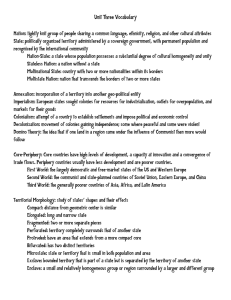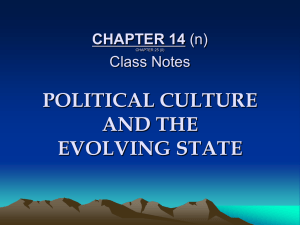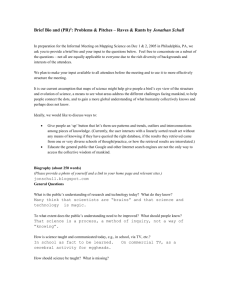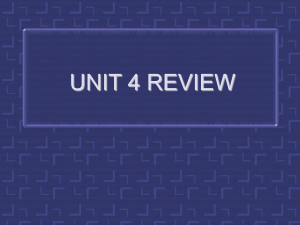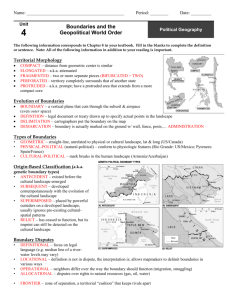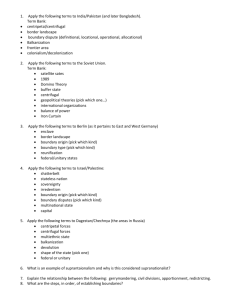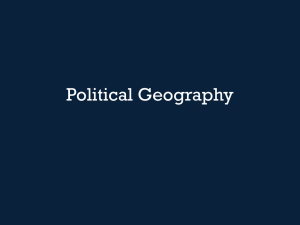Reading Guide - Pine Crest School
advertisement
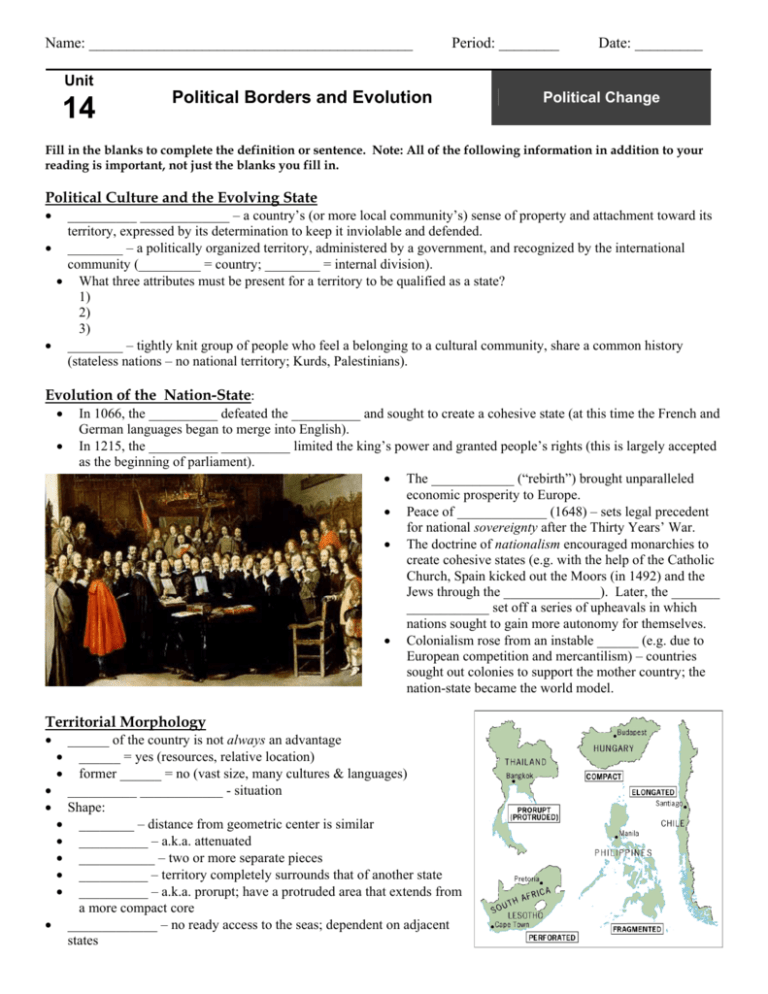
Name: ___________________________________________ Unit 14 Period: ________ Political Borders and Evolution Date: _________ Political Change Fill in the blanks to complete the definition or sentence. Note: All of the following information in addition to your reading is important, not just the blanks you fill in. Political Culture and the Evolving State • __________ _____________ – a country’s (or more local community’s) sense of property and attachment toward its territory, expressed by its determination to keep it inviolable and defended. • ________ – a politically organized territory, administered by a government, and recognized by the international community (_________ = country; ________ = internal division). • What three attributes must be present for a territory to be qualified as a state? 1) 2) 3) • ________ – tightly knit group of people who feel a belonging to a cultural community, share a common history (stateless nations – no national territory; Kurds, Palestinians). Evolution of the Nation-State: • • In 1066, the __________ defeated the __________ and sought to create a cohesive state (at this time the French and German languages began to merge into English). In 1215, the __________ __________ limited the king’s power and granted people’s rights (this is largely accepted as the beginning of parliament). • The ____________ (“rebirth”) brought unparalleled economic prosperity to Europe. • Peace of _____________ (1648) – sets legal precedent for national sovereignty after the Thirty Years’ War. • The doctrine of nationalism encouraged monarchies to create cohesive states (e.g. with the help of the Catholic Church, Spain kicked out the Moors (in 1492) and the Jews through the ______________). Later, the _______ ____________ set off a series of upheavals in which nations sought to gain more autonomy for themselves. • Colonialism rose from an instable ______ (e.g. due to European competition and mercantilism) – countries sought out colonies to support the mother country; the nation-state became the world model. Territorial Morphology • • • • • • • • • • • ______ of the country is not always an advantage ______ = yes (resources, relative location) former ______ = no (vast size, many cultures & languages) __________ ____________ - situation Shape: ________ – distance from geometric center is similar __________ – a.k.a. attenuated ___________ – two or more separate pieces __________ – territory completely surrounds that of another state __________ – a.k.a. prorupt; have a protruded area that extends from a more compact core _____________ – no ready access to the seas; dependent on adjacent states Evolution of Boundaries • • • • ___________ – a vertical plane that cuts through the subsoil & airspace (even outer space) ___________ – legal document or treaty drawn up to specify actual points in the landscape ____________ – cartographers put the boundary on the map ____________ – boundary is actually marked on the ground w/ wall, fence, posts,… Types of Boundaries • • • ____________ – straight-line, unrelated to physical or cultural landscape, lat & long (US/Canada) __________-____________ (natural-political) – conform to physiologic features (Rio Grande: US/Mexico; Pyrenees: Spain/France) __________-____________ – mark breaks in the human landscape (Armenia/Azerbaijan) • _________ - where historic circumstances have led to the existence of small outliers of territory separated from the state by the territory of another state. • _________ - an exclave that is landlocked within another country. Origin-Based Classification (a.k.a. genetic boundary types) • ___________ – existed before the cultural landscape emerged • ___________ – developed contemporaneously with the evolution of the cultural landscape • • ____________ – placed by powerful outsiders on a developed landscape, usually ignores pre-existing culturalspatial patterns ________ – has ceased to function, but its imprint can still be detected on the cultural landscape Boundary Disputes • • • • ___________ – focus on legal language (e.g. median line of a river: water levels may vary) ___________ – definition is not in dispute, the interpretation is; allows mapmakers to delimit boundaries in various ways ____________ – neighbors differ over the way the boundary should function (migration, smuggling) ____________ – disputes over rights to natural resources (gas, oil, water)
